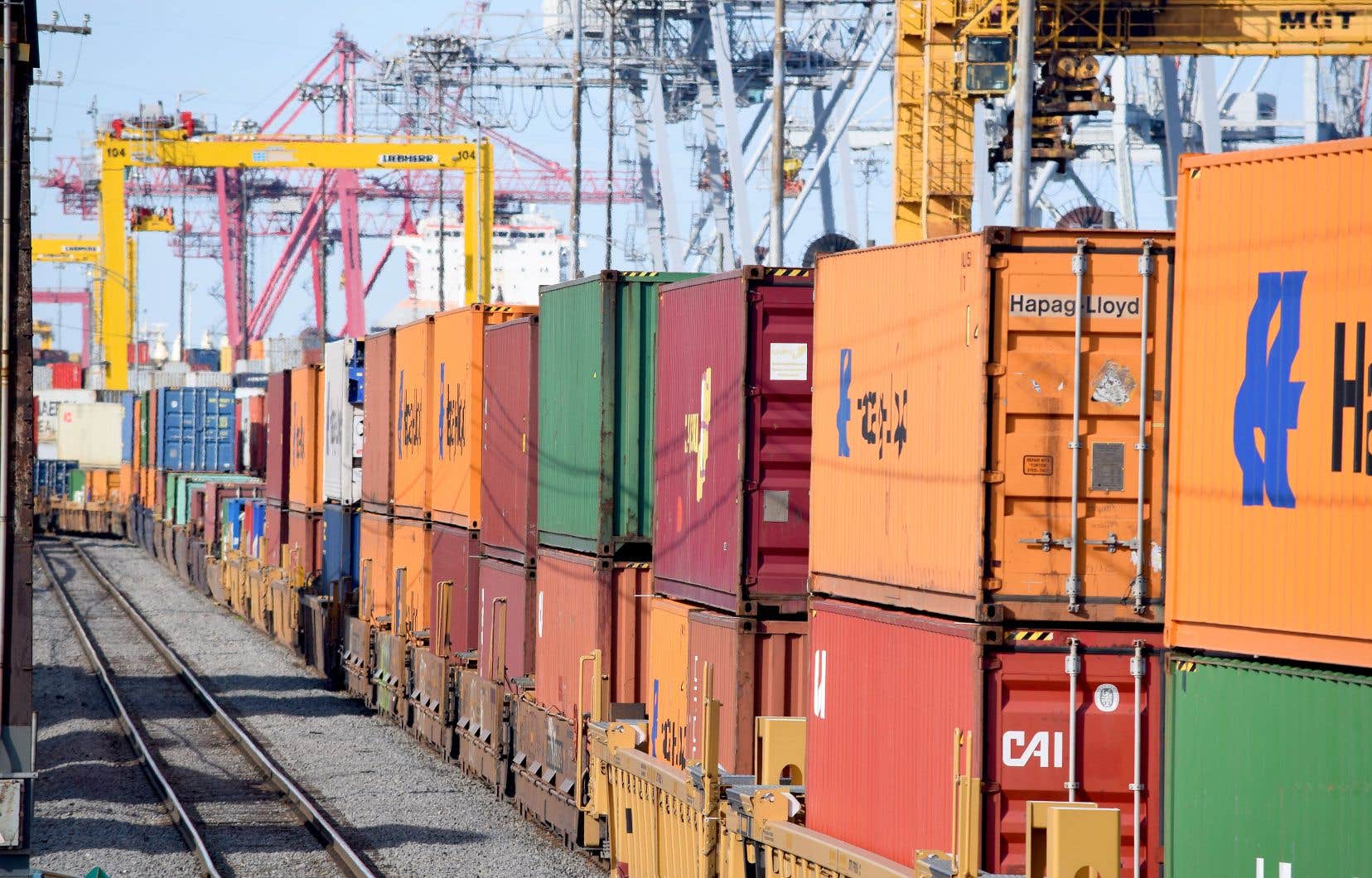The Trudeau government is injecting an additional $150 million into the Port of Montreal expansion megaproject in Contrecoeur, which should allow more than a million containers to transit each year. Construction will require dredging the St. Lawrence River and destroying critical habitat for the copper redhorse, an endangered species.
The Minister of Transport, Pablo Rodriguez, confirmed Tuesday morning the granting of an envelope of 150 million dollars to support the realization of this industrial project developed by the Montreal Port Authority (APM).
“The new terminal would increase the container management capacity of the Port of Montreal in order to meet the growing needs for freight transportation and help maintain the fluidity of port operations,” argued Transport Canada in a press release.
This federal support is in addition to the $300 million announced in 2019 by the Canada Infrastructure Bank. This first funding announcement from the Trudeau government took place even before the submission of a complete environmental study from the APM.
The Legault government has also released public funding for the construction of this terminal. The 2023-2024 budget thus provides 75 million dollars, a sum which is added to the 55 million already announced in January 2021 by the CAQ government. The Quebec government’s participation therefore reaches a total of $130 million.
“Logistics ecosystem”
It must be said that the initial bill for the port expansion project, which amounted to approximately $750 million, would now exceed $1.4 billion.
“This financial support from the federal government is a strong message towards our major expansion project in Contrecoeur and the future of the logistics ecosystem of the St. Lawrence corridor. It allows us to begin the next steps with confidence to continue to ensure our essential role as a sustainable economic engine at the heart of the economy of Quebec and Canada,” said Geneviève Deschamps, interim president and CEO of the APM.
A “call for proposals” is planned for early 2024 to select a private partner who will handle the construction of the terminal. The APM would be responsible for the construction of the docks and the dredging work.
The capacity of the Port of Montreal’s facilities on the island is 2.1 million containers annually, the Contrecoeur project would increase the total in the region to 3.25 million containers each year, an increase of 55 %. The project also includes the development of a seven-track rail yard. Up to 1,200 trucks would also pass through the site every day, and therefore through the local road network. This would be the largest port project in recent decades in Quebec.
Species at risk
The construction of this port involves the dredging of at least 750,000 cubic meters of sediment from the river, over an area estimated at 150,000 square meters (about 20 soccer fields). The project will also result in the destruction of portions of the critical habitat of the copper redhorse, a species that exists only in Quebec and which has been duly protected since 2021 under the Canadian Species at Risk Act.
However, the developer has not yet obtained the “permit” allowing him to destroy elements of critical habitat to build his 675-meter-long wharf. The legislation provides that authorization can be granted if the permit is requested for “scientific research”, an “activity which benefits the species” or if the project “only affects the species incidentally”.
In this context, the general director of the Society for Nature and Parks of Quebec, Alain Branchaud, criticizes the unwavering support of governments for this project. “The repeated announcements of investments for the construction of the Contrecoeur terminal even before the project has obtained all the authorizations demonstrate the government’s bias and contribute to undermining the independence of the public service,” he maintains.
“The federal government is unfortunately judge and party in this matter. A watertight firewall must be put in place to ensure that science and the precautionary principle guide the analysis leading to the delivery or not of an authorization under the Species at Risk Act,” adds Ms. . Branchaud.
The Montreal Port Authority wants to be reassuring about the possibility of establishing an industrial port within the limits of the critical habitat of the copper redhorse, without harming it. In particular, it plans to carry out “a project to restore two hectares of seagrass beds serving as habitat [à l’espèce]i.e. double the portion of herbaria that will be affected.”
Targeted by legal action in 2021 due to the lack of protection of the critical habitat of the copper redhorse, although the latter was provided for under the Species at Risk Act, the Trudeau government finally decided to to act.
The Legault government was opposed to this protection, which, according to it, risked having “significant socio-economic consequences in Quebec”. At the same time, the government has been funding a copper redhorse reproduction program since 2004, with the aim of saving this “endangered” species which is directly threatened by the destruction of its habitat.
